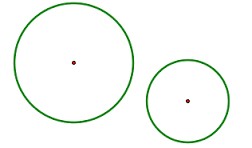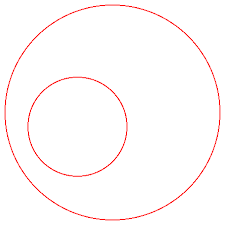Circle A has a center at #(1 ,2 )# and a radius of #8 #. Circle B has a center at #(-3 ,3 )# and a radius of #4 #. Do the circles overlap? If not, what is the smallest distance between them?
1 Answer
Yes, circles overlap.
Hence, the distance between them is equals to zero.
Explanation:
Let
Non-intersecting circles can be either completely outside of each other or a smaller circle can be completely inside of a bigger one.
In the former case the distance between centers is too big, bigger than the sum of their radiuses.

In the latter case the distance between centers is too small, smaller than the difference between a bigger and a smaller radiuses.

Therefore, to intersect, two circles must have (condition
AND, at the same time, (condition
The distance between
The sum of their two radiuses is
(so, condition
The difference between their two radiuses is
(so, condition
So, intersection does take place.
Hence, the distance between the circles is zero.

